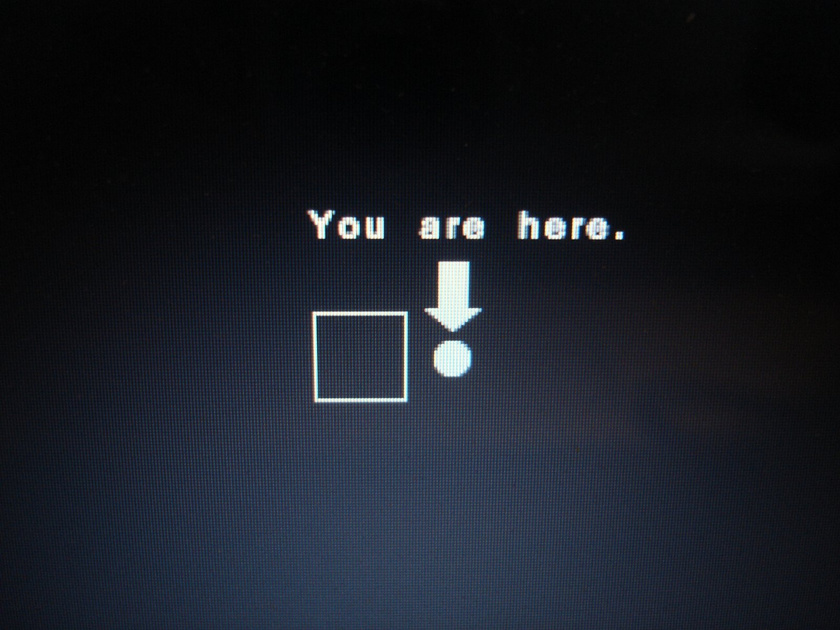
One of the first concepts I teach clients who begin therapy with me is the “Iceberg Method.” I draw the top of an iceberg sticking out from the water, and I say, “So you’re driving over a bridge in the winter, and the river is full of icebergs (I hold up the picture) right?” The client invariably responds, “right.” “Wrong!” I declare. I then proceed to complete my picture, drawing the bottom 2/3 of the iceberg below the water. “Now we’ve got an iceberg! If you took a rowboat out on the river, you’d get a better look, and find that the majority of it is beneath the surface.”
I then proceed to label the part of the iceberg above the water as “what it’s about” and the larger section below the surface as “what it’s really about.” I explain to clients that the “what it’s about” usually begins with the words “He/She/It,” as in, “She’s so mean!” “It’s not fair!.” The “what it’s really about” always begins with “I AM.” Examples are “I am unloved,” “I am worthless,” “I am abandoned,” “I am invisible.” This “I Am” was originally felt at a young age, and remains a sensitive wound, or what we call in psychology, a “core belief” or “core pain.”
I tell my clients that we are going to be playing a lot of this iceberg game in session, and they are going to play it at home a lot as well. In this way, we are going to gain insight into patterns of reactivity, and how they connect to unresolved past traumas.
So it didn’t come as any surprise to my clients when I suggested the “Iceberg Method” to delve more deeply into their distress around wearing a mask in my office. What came out was rich, informative and relieving (to us both, as I really don’t want to fight with my clients over masks for months on end).
“I won’t be able to breathe” cried Simi (names changed). “Well…” I scratched my chin. “There would be a lot of dead dentists if these masks blocked breathing.” Simi laughed. “Would it be ok if we did the Iceberg Method to figure out what’s distressing about coming to the office with a mask?” I had Simi notice her emotions and how she felt them in her body. “Shame…I Am not deserving! That’s it!” Further discussion uncovered that it was the transition from the phone back to the office that made the therapy feel “more real,” and her feeling that she did not deserve to spend the money on therapy for herself, something she had struggled with at the very beginning of therapy, was re-emerging as she returned to my room, and had to again begin to hand me her payment at the end of the hour, after months on the phone with the occasional payment dropoff by her husband.
“No way. We’ll sit in the park all winter before I’ll have your face covered with a mask! Two people can’t do therapy with their whole face covered!” “My Whole face?!” I asked. “You should get a see-through mask so I can see your expressions.” "Well, I could, but that wouldn't get us to the root of this." We drew our iceberg, and Etty exclaimed, “You’ll be laughing at me under your mask where I won’t see it, and I… I will be Obliterated!” Being laughed at was not a new theme for Etty, and we both knew where this exchange would go, but therapy usually requires a lot of repetition. “Are you afraid I’ll laugh at you for the first time in 5 years, or do you want me to laugh at you?” “Yeah! I want you to, so I can get you!” And so we continued our work around Etty’s difficulty accepting the helplessness she felt when she was laughed at growing up, her relentless hope and fantasies of revenge.
“I don’t like masks. No, I’ll stay on the phone rather than come in with a mask.” We went to our iceberg. On top went “I don’t like masks.” On the bottom went “I Am forced.” Ruchy feared that if she returned to my office after so many months, she would feel what she felt when she first started therapy three years ago, forced. Never mind the mask, Ruchy couldn’t even look at me due to her rage that her husband and I had forced her into therapy. This was news to me. I never even knew she had felt that way. Her first year of therapy, as I recalled, had been nothing but her making demands and wanting more time and more sessions (what I took as dependency, I now realize was a struggle for power). A rich exploration ensued, and we floated this “forced” feeling back to several deeply painful childhood memories of being forced, having no choice or voice, over which Ruchy had never grieved.
Chani had for months been teasing and criticizing the boundaries I had set to keep myself and the few other clients who had not had COVID safe. I literally got gigged at week after week, until I said, “We’ve talked a lot about how you feel about me for following my doctors instructions regarding safety in my office… but we have succeeded in avoiding all talk about how you’re feeling about having to talk on the phone if you’ve been to a party, or come in with a mask if you have not. Let’s put an end to the talk about me, and agree that from now on we’re going to talk about you.” “I feel you’re too afraid” came out like a whine from a child. “…and therefore you are?” “Not stable!” “Ah! Not Stable. And when did you feel that way growing up, I wonder?” “All the tiiiiiimmmme!” Out tumbled a 15 minute narrative on growing up with an anxious, overwhelmed mother. I apologized to Chani for being remiss in not turning this around much sooner, and wondered out loud how we had gotten so mired in our arguments about COVID. “That’s easy! I don’t like talking about me!” And so proceeded our most fruitful and exploratory session ever.
Transitions and changes in the therapy routine can be hard. But they are especially hard, frightening and full of pain for people with childhood trauma and attachment disorders. Often these painful memories are dealt with ineffectively through projections and reenactments. When a client is trained to use “insight-getting tools” such as the “Iceberg Method,” what could become an impasse can easily become a rewarding, nonjudgmental, relieving curiosity quest.

 Previous
Previous

